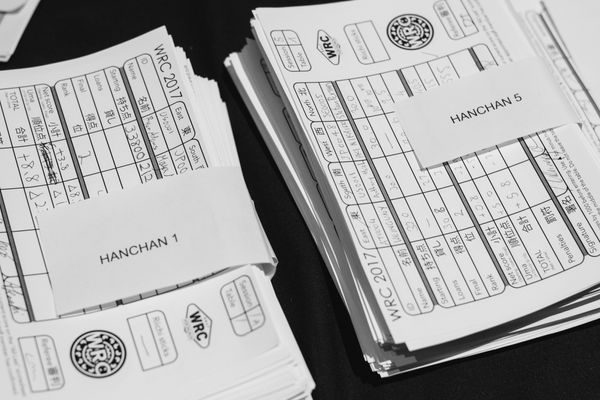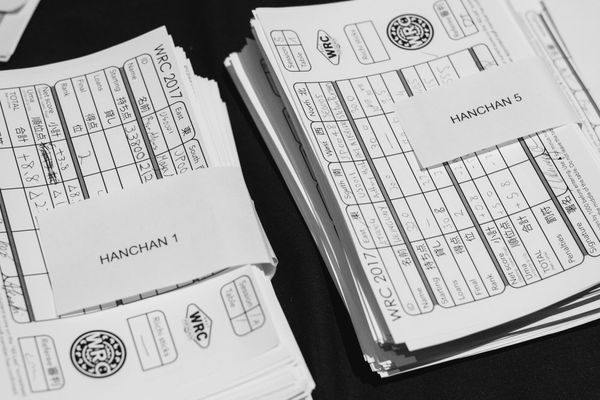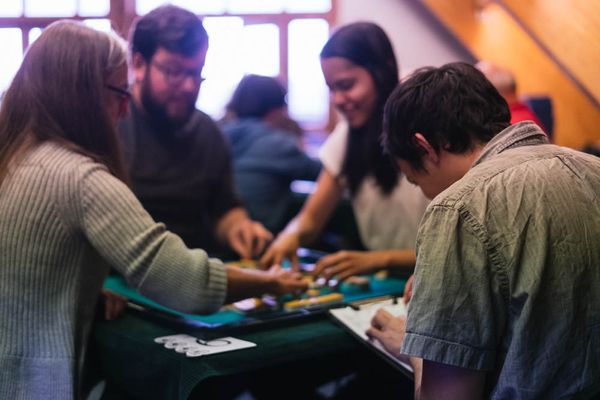Wait Reading
TRA here. This time, I’ll go further than just explaining why a two-sided wait is superior to a closed wait. Instead, I will talk about the basics of reading a hand’s wait.
In mahjong, there are three basic sequences for the numbered suits. 1-4-7, 2-5-8, and 3-6-9. The numbers in these sequences are related because two out of three of them will complete an open wait. This can also be thought of as a three-sided wait for all the tiles in the sequence.
For example,

This hand is tenpai and with a 258p wait. This is because it is technically two open waits joined together. You can look at it like |345| 67 — waiting on a 5p or 8p, or like 34 |567| — waiting on a 2p or 5p. This is also an important concept to keep in mind to avoid furiten. This, along with some other basic patterns, will help you to read waits more quickly and easily. Another common pattern would be

In this example, the waits would be 124s. This is because the 14s would complete the open wait, using the 3s as the pair ( 23 |33| ) and the 2s would be equivalent to a single wait, using the 3s as a concealed set ( 2 |333| ). These are the most common patterns which create more than two waits in a hand. And as a last example,

This one is a bit more complex. Since the 123s and 999s are isolated, we can remove those so we can see the rest of the hand more easily. This leaves us with 3456777p. There are two ways you can think about completing this hand.

258p double open wait
And

36p single waits
As you can see from this example, one of the the first things you should do when finding the wait of a hand is to figure out if any sets in the hand can be used as the pair. Another way is to find the three-sided waits which come from five sequential tiles and to work from there. In reality though, you won’t need much more ability to read waits than this since a hand with five waits is already quite rare. Another way to strengthen your wait reading ability is to force yourself to play flower style (don’t arrange tiles to put them in order). Just make sure that you know most basic patterns so you won’t choke on a hand with a few suited tiles clustered together.
—–More useless knowledge from TRA



